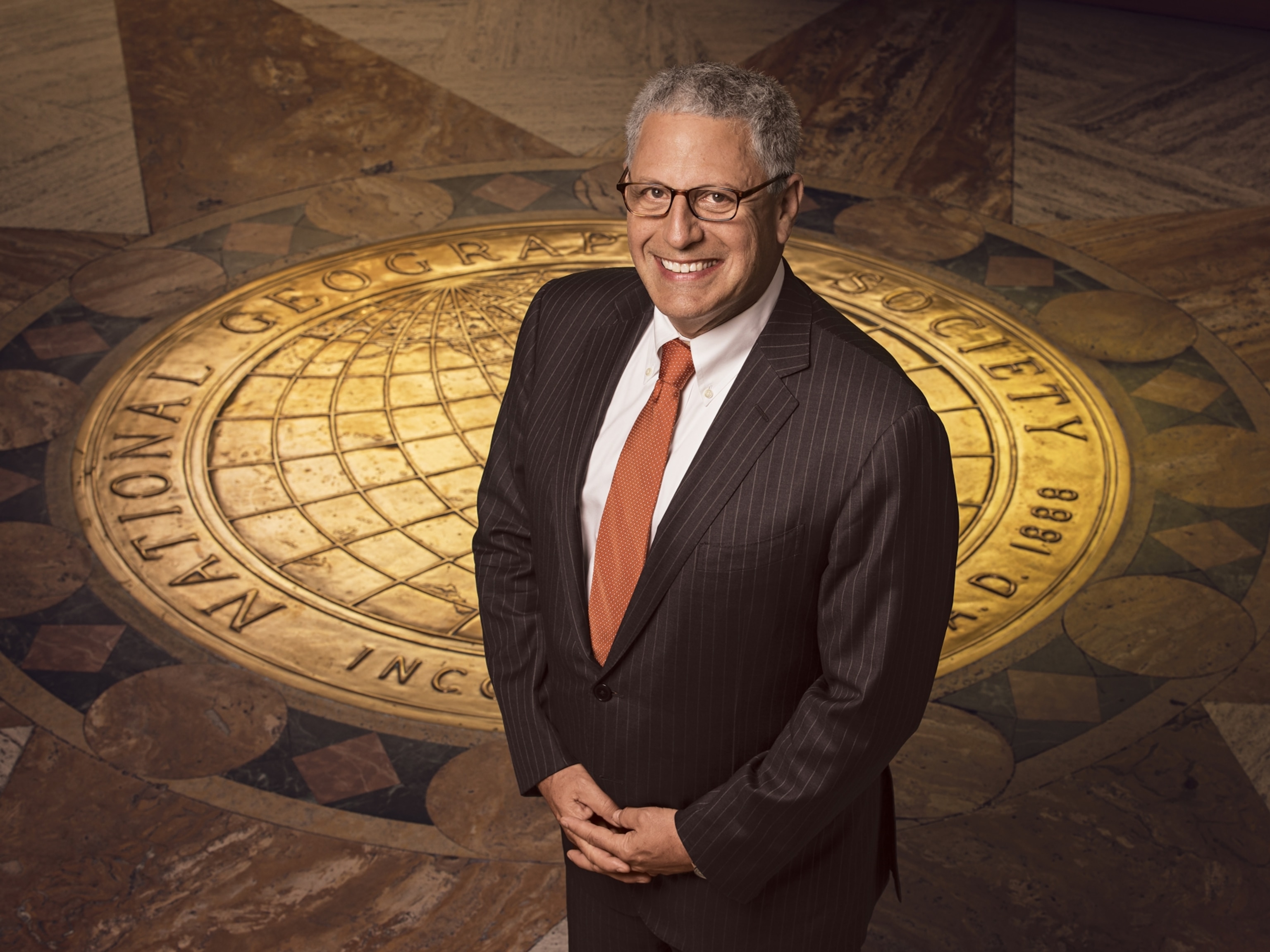
How bicycles transformed our world
Coronavirus has sparked a two-wheeled transport boom in many parts of the globe. But this isn't the first time bicycles have been the hottest machines on the market.
If history doesn't quite repeat itself, it certainly rhymes. With demand for bicycles soaring, and nations preparing to spend billions to redesign their cities with a new focus on cycling and walking, it's worth remembering how the advent of the bicycle in the late 19th century transformed societies the world over.
It was a hugely disruptive technology, easily the equivalent of the smartphone today. For a few heady years in the 1890s, the bicycle was the ultimate must-have—swift, affordable, stylish transportation that could whisk you anywhere you cared to go, anytime you liked, for free.
Almost anyone could learn to ride, and almost everyone did. The sultan of Zanzibar took up cycling. So did the czar of Russia. The amir of Kabul bought bicycles for his entire harem. But it was the middle and working classes around the globe that truly made the bicycle their own. For the first time in history, the masses were mobile, able to come and go as they pleased. No more need for expensive horses and carriages. The “people's nag,” as the bicycle was known, was not only lightweight, affordable, and easy to maintain, it was also the fastest thing on the roads.


Society was transformed. Women were especially enthusiastic, discarding their cumbersome Victorian skirts, adopting bloomers and “rational” clothes, and taking to the road in droves. “I think bicycling has done more to emancipate women than anything else in the world,” Susan B. Anthony said in an interview with the New York Sunday World in 1896. “I stand and rejoice every time I see a woman ride by on a wheel...the picture of free, untrammelled womanhood.”
By 1898 cycling had become such a popular activity in the United States that the New York Journal of Commerce claimed it was costing restaurants and theaters more than $100 million a year in lost business. Bicycle manufacturing became one of America’s biggest and most innovative industries. A third of all patent applications were bicycle related—so many that the U.S. patent office had to build a separate annex to deal with them all. (Discover five cities perfect for exploring by bike.)
From curiosity to craze
The person generally credited with inventing the modern bicycle was an Englishman named John Kemp Starley. His uncle, James Starley, had developed the penny-farthing in the 1870s. Suspecting that there might be greater demand for bicycles if they weren’t so scary and dangerous to ride, in 1885 the 30-year-old inventor began experimenting in his Coventry workshop with a chain-driven bicycle featuring two much smaller wheels. After testing several prototypes, he came up with the Rover safety bicycle, a 45-pound machine that more or less resembles what today we think of as a bicycle.
When first displayed at a bicycle show in 1886, Starley’s invention was regarded as a curiosity. But two years later, when it was paired with the newly invented pneumatic tire—which not only cushioned the ride but also made the new safety bicycle about 30 percent faster—the result was magic.

Bicycle makers around the world scrambled to offer their own versions, and hundreds of new companies sprang up to meet demand. At the Stanley Bicycle Show in London in 1895, some 200 bicycle makers exhibited 3,000 models.
One of the biggest manufacturers was Columbia Bicycles, whose factory in Hartford, Connecticut, could turn out a bicycle a minute thanks to its automated assembly line—a pioneering technology that one day would become the hallmark of the automobile industry. As a cutting-edge employer in a booming industry, Columbia also provided its employees with bicycle parking, private lockers, subsidised meals at the company canteen, and a library.
The insatiable demand for bicycles spawned other industries—ball bearings, wire for spokes, steel tubing, precision toolmaking—that would shape the manufacturing world long after the bicycle was relegated to the toy department. The ripple effect extended to advertising as well. Artists were commissioned to create beautiful posters, providing a lucrative market for the newly developed lithography processes that allowed for printing in rich, vivid colors. Marketing strategies, such as planned obsolescence and rolling out new models every year, got their start with the bicycle trade in the 1890s.



Gene pools and politics
With a bicycle anything seemed possible, and ordinary people set off on extraordinary journeys. In the summer of 1890, for instance, a young lieutenant in the Russian army pedaled from St. Petersburg to London, averaging 70 miles a day. In September 1894, 24-year-old Annie Londonderry set out from Chicago with a change of clothes and a pearl-handled revolver to become the first woman to cycle around the world. Just under a year later she arrived back in Chicago and collected a $10,000 prize.
In Australia, itinerant shearers routinely rode hundreds of miles across the waterless outback looking for work. They set out on these trips as though they were rides in the park, recalled newspaper correspondent C.E.W. Bean in his book On The Wool Track. “He asked his way, lit his pipe, put his leg over his bicycle and shoved off. If he were city bred, as were many shearers, the chances were he started in a black coat and bowler hat, exactly as if he were going to tea at his aunts.”
And in the American West, during the summer of 1897, the U.S. Army’s 25th Regiment—an African-American unit known as the Buffalo Soldiers—made an extraordinary 1,900-mile trek from Fort Missoula, Montana, to St. Louis, Missouri, to demonstrate the usefulness of bicycles to the military. Carrying full kit and carbines and riding over rough, muddy tracks, the Buffalo Soldiers averaged nearly 50 miles a day—twice as fast as a cavalry unit, and at a third the cost.
The advent of the bicycle touched virtually every aspect of life—art, music, literature, fashion, even the human gene pool. Parish records in England show a marked rise in intervillage marriages during the bicycle craze of the 1890s. Newly liberated young people roamed the countryside at will, mingling on the road, meeting up in distant villages, and—as was noted by scowling morals campaigners of the day—often outpacing their older chaperones.
English songwriter Henry Dacre scored a huge hit on both sides of the Atlantic in 1892 with Daisy Bell and its famous refrain “a bicycle built for two.” Writer H.G. Wells, an avid cyclist and a shrewd social observer, wrote several “cycling novels,” gentle narratives centered around the romantic, liberating, class-dissolving possibilities of this wonderful new form of transportation.

Wells wasn’t the only visionary who saw a role for the bicycle in shaping the future. “The effect [of bicycles] in the development of cities will be nothing short of revolutionary,” effused a writer in an American sociology magazine in 1892. In an article titled “Economic and Social Influences of the Bicycle,” the writer predicted cleaner, greener, calmer cities with happier, healthier, more outward-looking residents. Thanks to the bicycle, he wrote, young people “see more of the world and are broadened by the contact. While otherwise they would seldom go beyond strolling distance from their homes, on the bicycle they are constantly roaming through many surrounding towns, becoming familiar with whole counties and in vacation time, not infrequently exploring several states. Such experiences produce growth in energy, self-reliance and independence in character….”
The political clout of millions of cyclists and one of the nation’s biggest industries led to rapid improvements in city streets and country roads as cyclists literally paved the way for the yet unforeseen age of the automobile. Brooklyn opened one of the nation’s first dedicated cycle paths in 1895, a route from Prospect Park to Coney Island. Some 10,000 cyclists used it the first day. Two years later New York City enacted the nation’s first traffic code in response to a growing number of “scorchers”—speed demon cyclists. The city’s police commissioner, Teddy Roosevelt, introduced bicycle-mounted policemen who could apprehend the speedsters, for the people’s nag was still the fastest thing on the road. (This Colombian city bans cars every Sunday—and cyclists love it.)
But not for much longer. Before the decade was out tinkerers in the bicycle trade on both sides of the Atlantic had worked out that spoke-tension wheels, chain drives, and ball bearings could be combined with motors to make even swifter vehicles—not as quiet as the bicycle nor as cheap to operate, but fun to drive and profitable to make. In Dayton, Ohio, two bicycle mechanics—brothers Wilbur and Orville Wright—were exploring the idea of a heavier-than-air flying machine, strapping wings to bicycles to test aerodynamic possibilities, and funding their research with profits from their bike shop.
Back in the northern England town of Coventry, James Kemp Starley, whose Rover safety bicycle started it all in the 1880s, died suddenly in 1901 at age 46. By then his company was moving on from the humble bicycle to produce motorcycles and eventually automobiles. It seemed the way of the future: Over in America, another former bicycle mechanic named Henry Ford was doing rather well at it.
Related Topics
You May Also Like
Go Further
Animals
- Octopuses have a lot of secrets. Can you guess 8 of them?
- Animals
- Feature
Octopuses have a lot of secrets. Can you guess 8 of them? - This biologist and her rescue dog help protect bears in the AndesThis biologist and her rescue dog help protect bears in the Andes
- An octopus invited this writer into her tank—and her secret worldAn octopus invited this writer into her tank—and her secret world
- Peace-loving bonobos are more aggressive than we thoughtPeace-loving bonobos are more aggressive than we thought
Environment
- Listen to 30 years of climate change transformed into haunting musicListen to 30 years of climate change transformed into haunting music
- This ancient society tried to stop El Niño—with child sacrificeThis ancient society tried to stop El Niño—with child sacrifice
- U.S. plans to clean its drinking water. What does that mean?U.S. plans to clean its drinking water. What does that mean?
- Food systems: supporting the triangle of food security, Video Story
- Paid Content
Food systems: supporting the triangle of food security - Will we ever solve the mystery of the Mima mounds?Will we ever solve the mystery of the Mima mounds?
History & Culture
- Strange clues in a Maya temple reveal a fiery political dramaStrange clues in a Maya temple reveal a fiery political drama
- How technology is revealing secrets in these ancient scrollsHow technology is revealing secrets in these ancient scrolls
- Pilgrimages aren’t just spiritual anymore. They’re a workout.Pilgrimages aren’t just spiritual anymore. They’re a workout.
- This ancient society tried to stop El Niño—with child sacrificeThis ancient society tried to stop El Niño—with child sacrifice
- This ancient cure was just revived in a lab. Does it work?This ancient cure was just revived in a lab. Does it work?
Science
- The unexpected health benefits of Ozempic and MounjaroThe unexpected health benefits of Ozempic and Mounjaro
- Do you have an inner monologue? Here’s what it reveals about you.Do you have an inner monologue? Here’s what it reveals about you.
- Jupiter’s volcanic moon Io has been erupting for billions of yearsJupiter’s volcanic moon Io has been erupting for billions of years
- This 80-foot-long sea monster was the killer whale of its timeThis 80-foot-long sea monster was the killer whale of its time
Travel
- How nanobreweries are shaking up Portland's beer sceneHow nanobreweries are shaking up Portland's beer scene
- How to plan an epic summer trip to a national parkHow to plan an epic summer trip to a national park
- This town is the Alps' first European Capital of CultureThis town is the Alps' first European Capital of Culture
- This royal city lies in the shadow of Kuala LumpurThis royal city lies in the shadow of Kuala Lumpur







